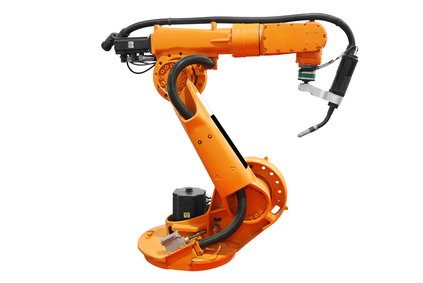Robotic Welding
 Things to Know About Robotic Welding in Metal Fabrication Shops
Things to Know About Robotic Welding in Metal Fabrication Shops
Robotic welding tools have many advantages — they cut staffing costs, speed up production, and can be built to scale for your projects. By taking humans out of the equation, many welding projects see significant savings, but robots aren’t right for every workplace.
Welding cells are a lot less expensive than they were a decade ago, and they work better than they first did. Still, there remains much to consider in determining if a robotic welding system is right for you.
Potential Savings
Robotic welding costs less in energy and labour than traditional welding, and this helps the installations pay for themselves over time. The weld that a robot uses can be bought in bulk, and might save you even more money.
Robots aren’t prone to the same errors humans are, so they don’t tend to over weld. An 1/8th of an inch too much weld bead may not seem like much to a human welder, but it can double filler metal costs.
All these savings add up, and to calculate whether robotic welding is the right choice for you, it helps to calculate your long-term savings. If you don’t feel confident to do the calculations, go to a robotic welding integrator or an OEM for guidance.
Potential Challenges
If your business works with several different complex parts in your welding projects, robotic welding might not be the right choice for you, since humans can still handle these problems more accurately than robots. On the other hand, robotic welders work best with repeatable part designs, speeding up production significantly on high-volume products.
Depending on your needs, you can work to create consistent flow in your welding projects to make best use of robotic cells and keep your business moving.
Many first time users are also concerned that their robot will be difficult to program, but that is an unnecessary concern. Most robotic welding systems use simple visual interactive programs, making them easy to use for most knowledgeable workers.
Safety Concerns
Modern robotic welding cells are fully automated but still need human interaction to keep operations running smoothly.
In order to keep human operators safe, many robotic welding machines come equipped with an interlocked door, which the operator must open to access the machinery. While these are a great safety feature, opening doors takes time; so high-productivity cells might need an alternative safety solution.
The past few years have seen the introduction of new robotic standards in the U.S. that focus on maintaining safety (and productivity) in the workplace. For a full understanding, check in with the Occupational Safety and Health Administration, the American National Standards Institute, or the International Organization for Standardization, which all publish information for manufacturers.
These standards come with certain working advantages, including new safety regulations that allow programmable safety controls. That means designers can build smaller robotic cells, relying on safety controls for precaution rather than building cells that would cover any possible motion. The new standards also allow people to load and unload robots and work with the robot welders more closely.
As standards keep changing, the important thing is to keep up to date. Thankfully, many of these new standards are built to help you run your business more smoothly.

